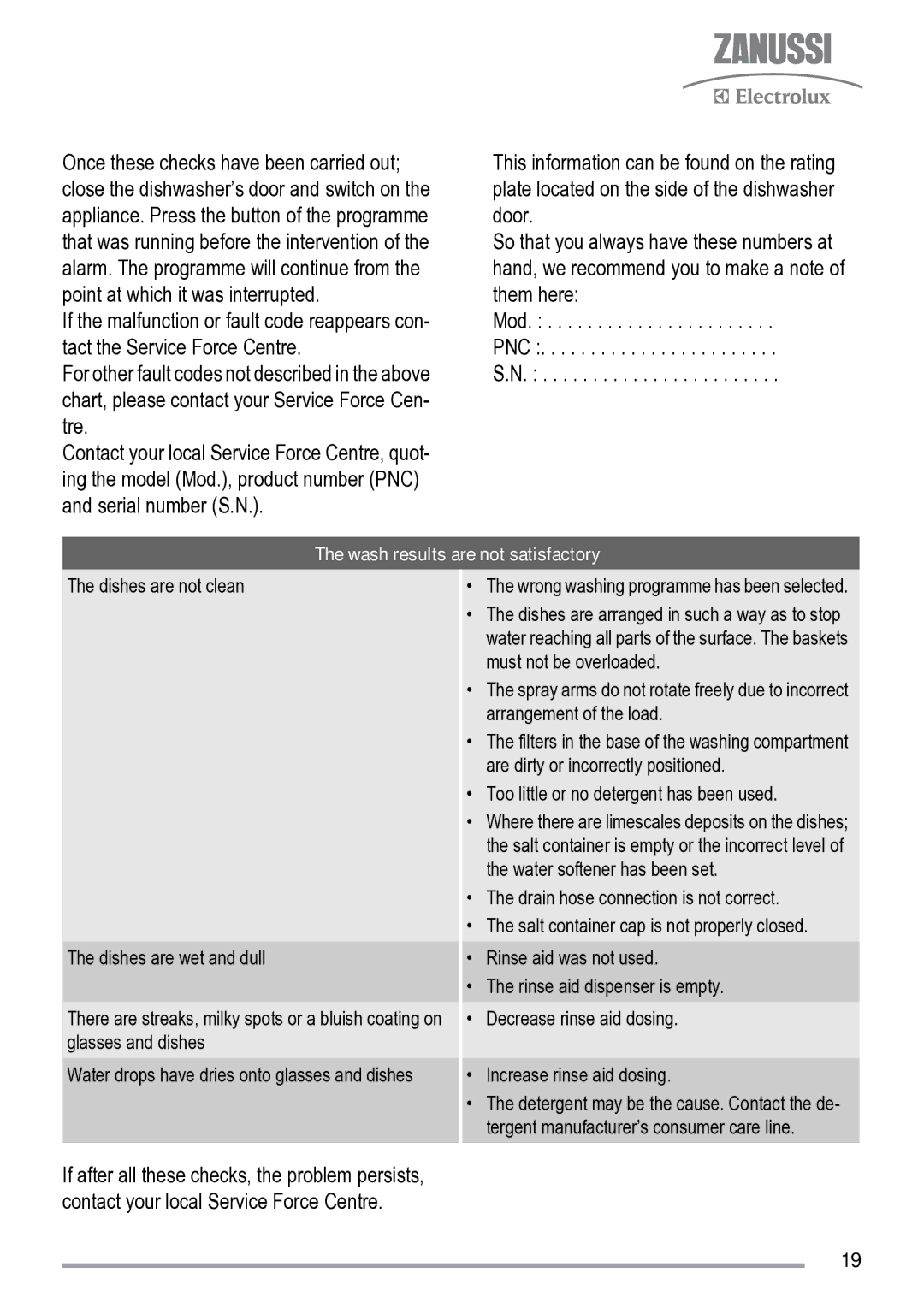ZDS 231 specifications
The Zanussi ZDS 231 is a highly efficient and versatile dishwasher designed for modern kitchens, combining style, performance, and user-friendly features. This compact built-in appliance is perfect for those who want to maximize kitchen space without compromising on functionality.One of the standout features of the Zanussi ZDS 231 is its large capacity, accommodating up to 13 place settings. This makes it an ideal choice for families or those who frequently entertain guests. The adjustable top basket allows users to easily fit larger pots and pans, ensuring that all dishes can be washed without hassle.
This model excels in its energy efficiency, boasting an impressive A++ energy rating. The reduced energy consumption not only helps lower utility bills but also minimizes environmental impact. The unit's water consumption is equally efficient, using as little as 9.5 liters per cycle, making it a responsible choice for eco-conscious consumers.
Zanussi has equipped the ZDS 231 with advanced washing technologies to ensure optimal cleaning results. The Auto program is a notable feature that automatically adjusts the wash cycle depending on the load’s dirtiness. This smart technology detects soil levels and adjusts the duration and temperature accordingly, saving both time and resources.
In addition to the Auto program, the Zanussi ZDS 231 offers multiple wash programs tailored to different types of dishes and levels of soil. Options like Intensive, Eco, and Quick programs provide flexibility, allowing users to choose the most suitable setting for their needs. The Quick program is particularly advantageous for busy households, providing fast and efficient cleaning in just 30 minutes.
Noise levels are kept to a minimum with this model, operating at a quiet 47 dB, meaning it can run silently in the background without disrupting daily activities. The sleek design features a modern control panel with intuitive buttons, making it easy for users to select their desired settings.
The Zanussi ZDS 231 also comes with a delay start option, allowing users to set the dishwasher to run at a later time, which can be especially beneficial for those on a busy schedule. Furthermore, its durable stainless steel interior ensures longevity and effective temperature regulation during cycles.
In summary, the Zanussi ZDS 231 stands out for its spacious capacity, energy efficiency, intelligent wash programs, and quiet operation. This model perfectly blends practicality with modern technology, making it a fitting addition to any contemporary kitchen. Whether you’re washing everyday dishes or hosting a dinner party, the ZDS 231 has the features to meet your needs and deliver exceptional cleaning results.

